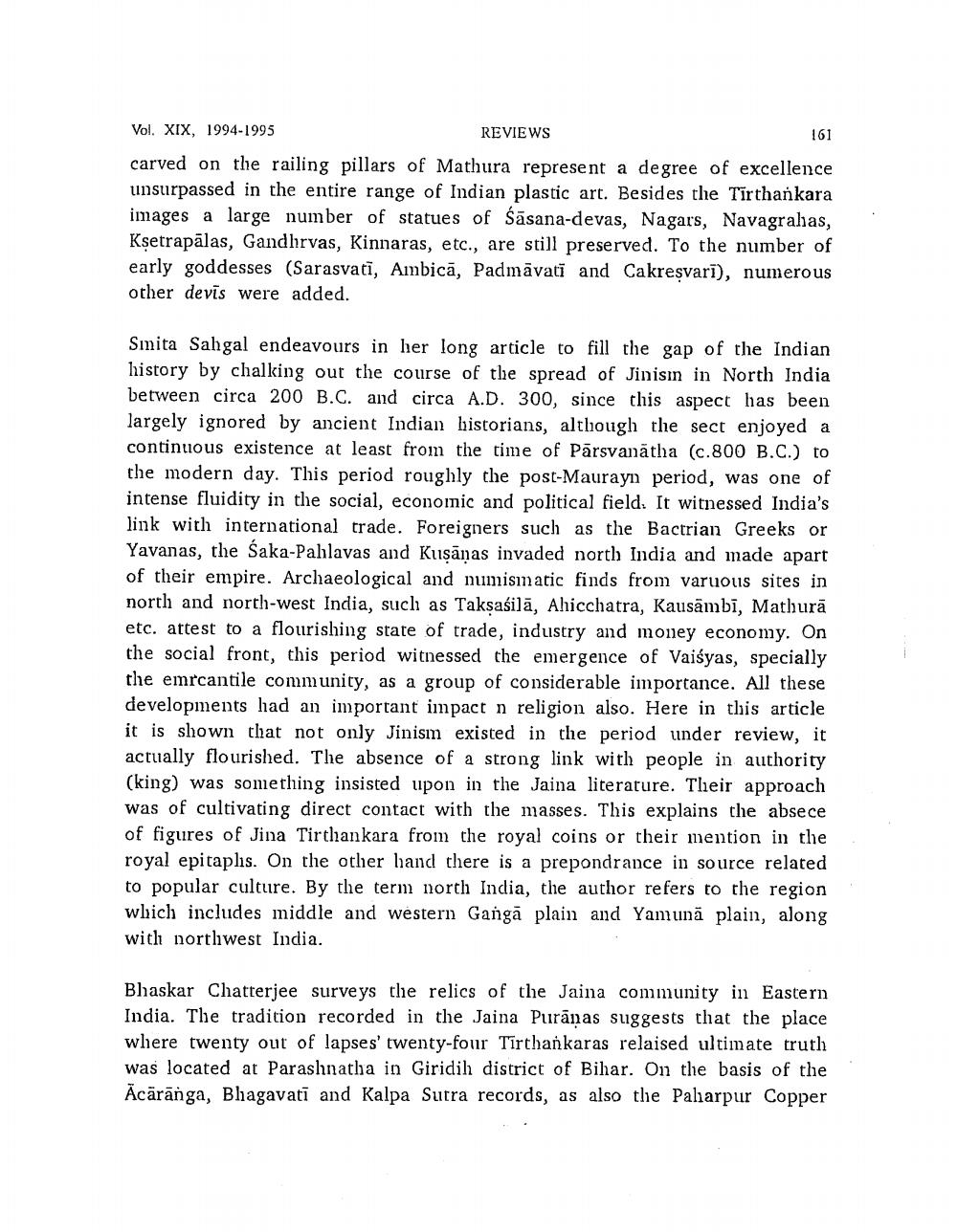________________
Vol. XIX, 1994-1995
REVIEWS
161 carved on the railing pillars of Mathura represent a degree of excellence unsurpassed in the entire range of Indian plastic art. Besides the Tirthankara images a large number of statues of Śāsana-devas, Nagars, Navagrahas, Ksetrapālas, Gandhrvas, Kinnaras, etc., are still preserved. To the number of early goddesses (Sarasvati, Ambicā, Padmāvati and Cakreşvarī), numerous other devīs were added.
Smita Sahgal endeavours in her long article to fill the gap of the Indian history by chalking out the course of the spread of Jinisin in North India between circa 200 B.C. and circa A.D. 300, since this aspect has been largely ignored by ancient Indian historians, although the sect enjoyed a continuous existence at least from the time of Pārsvanātha (c.800 B.C.) to the modern day. This period roughly the post-Maurayn period, was one of intense fluidity in the social, economic and political field: It witnessed India's link with international trade. Foreigners such as the Bactrian Greeks or Yavanas, the Saka-Pahlavas and Kuşāņas invaded north India and made apart of their empire. Archaeological and numismatic finds from varuous sites in north and north-west India, such as Taksasilā, Ahicchatra, Kausāmbi, Mathurā etc. attest to a flourishing state of trade, industry and money economy. On the social front, this period witnessed the emergence of Vaisyas, specially the emrcantile community, as a group of considerable importance. All these developments had an important impact n religion also. Here in this article it is shown that not only Jinism existed in the period under review, it actually flourished. The absence of a strong link with people in authority (king) was something insisted upon in the Jaina literature. Tlieir approach was of cultivating direct contact with the masses. This explains the absece of figures of Jina Tirthiankara from the royal coins or their mention in the royal epitaplıs. On the other hand there is a prepondrance in source related to popular culture. By the term north India, the author refers to the region which includes middle and western Gangā plain and Yamunā plain, along with northwest India.
Bhaskar Chatterjee surveys the relics of the Jaina community in Eastern India. The tradition recorded in the Jaina Purānas suggests that the place where twenty out of lapses' twenty-four Tirthankaras relaised ultimate truth was located at Parashnatha in Giridih district of Bihar. On the basis of the Ācārānga, Bhagavati and Kalpa Sutra records, as also the Paliarpur Copper




